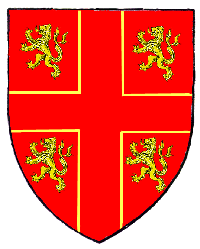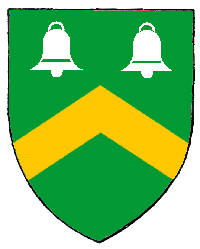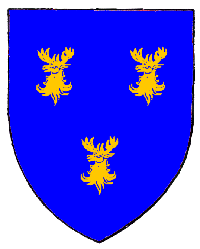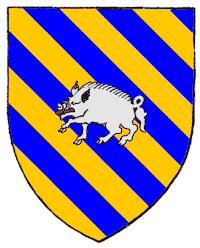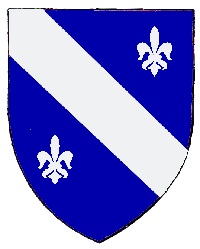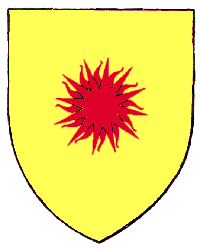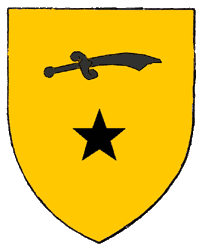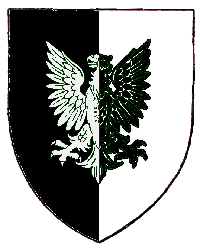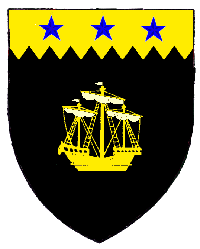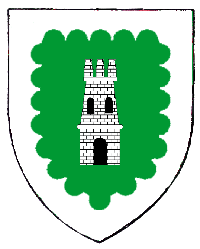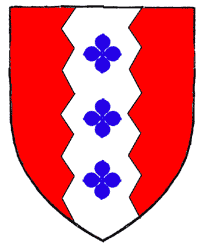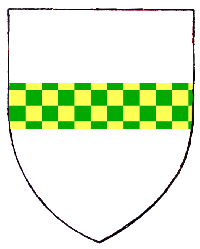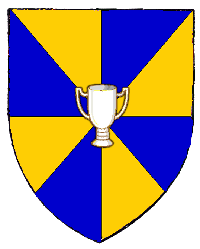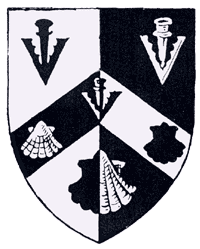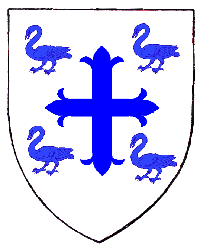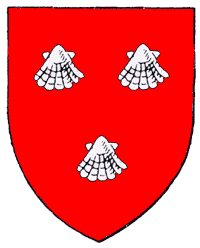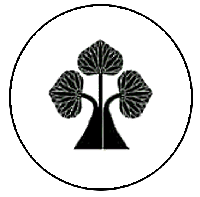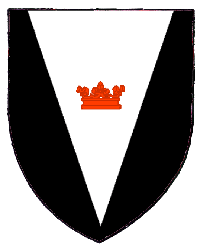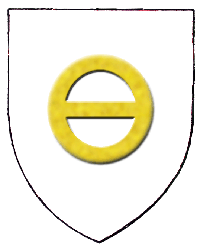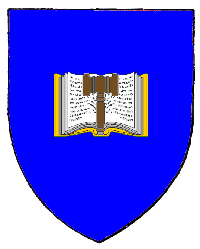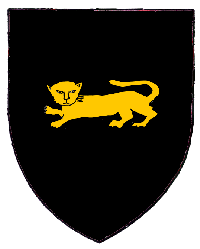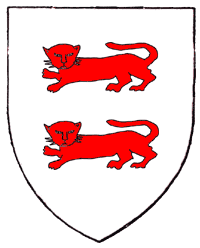College of Heralds
Many of the crests below have larger versions for your use. Click on a crest to see its larger version, if available.
Standards and Tabards
Jeff Yxaus owns cloth standards for Allondell, Cadfaigh, Ragnorack, Kislevia, and Chardreau. GMs interested in borrowing these standards for events should feel free to contact him. Quest also owns several standards for Valenne.
Quest has red/blue reversible tabards, and green/black reversible tabards. Each country has at least one of these colors in its crest; that color is listed below. We've tried to prevent countries from sharing tabard colors with their neighbors.
| Country | Preferred tabard color |
| Allondell | Red |
| Bilgosh | Green |
| Cadfaigh | Blue |
| Castagna | Blue |
| Chardreau | Blue |
| Iñarra | Red |
| Kislevia | Black |
| Kjolnir | Black |
| Linneraigh | Green |
| Ragnorack | Red |
| Roudoigne | Green |
| Tamplonia | Blue |
| Trenzano | Black |
| Valenne | Blue |
| Vallino | Red |
| Zdunarova | Red |
Note that Kiljukan, Yamamoto, and the Marakh lands have no tabard color listed. That's because these countries do not traditionally wear tabards!
Coats of Arms
Nations
Religious Coats of Arms
Other Crests and Emblems
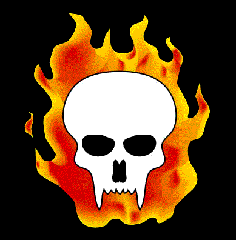 Black Company On a chief sable, a skull argent, cabossed, a flame gules. |
Former lands of Hesket:
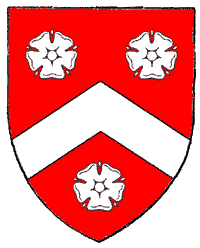 Caelland Gules, a chevron between three roses argent. |
 Ennitaria Per pale vert and sable a crown or. |
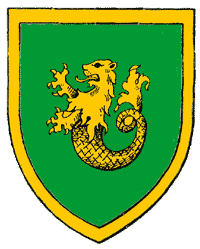 Napermo Vert, a bordure or, a sea-lion rampant of the second. |
Armigerous persons
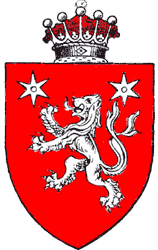 Alioni, Giancarlo Gules, a lion rampant argent, in chief two mullets of the second. |
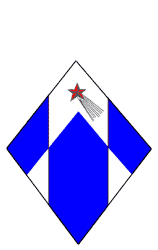 d'Arbonne, Elizabeth Per chevron azure and argent, a pale counterchanged, in chief a comet gules. |
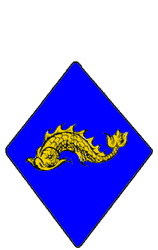 Delfini, Isabella Azure, a dolphin or. |
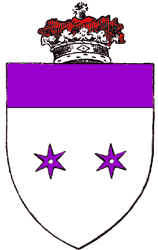 di Marra, Severus Argent, two mullets purpure, a chief of the second. |
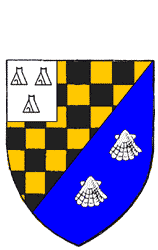 di Melini, Slygras Per bend sinister, checky sable and or, and azure, in bend two scallops argent, overall on a canton of the third three feligrams of the first, two and one. |
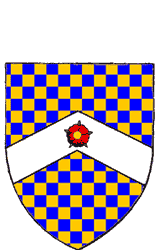 Hawthorne, Neville checky or and azure, on a chevron argent a rose gules. |
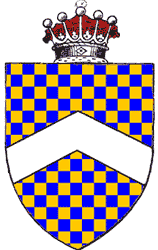 Hawthorne, Richard checky or and azure a chevron argent. |
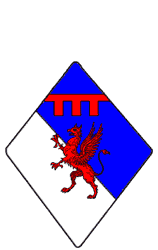 Kelteren, Gwyneth per bend azure and argent, a gryphon rampant gules, in chief a label gules. |
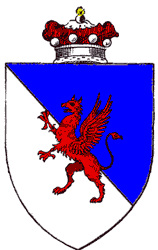 Kelteren, Madoc per bend azure and argent, a gryphon rampant gules. |
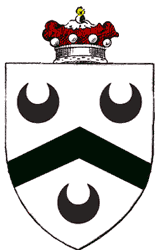 Luccani, Giuseppe Argent, between three crescents sable two and one, a chevron of the second. |
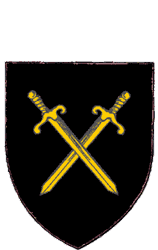 Marshall, John Sable, two swords in saltire or. |
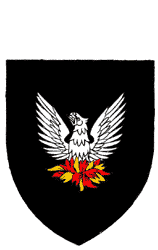 MacAllister, Jamie Sable, a phoenix argent issuant in flames proper. |
 Prince Martin of Cadfaigh and Ragnorack Quarterly Ragnorack and Cadfaigh, overall a label argent. |
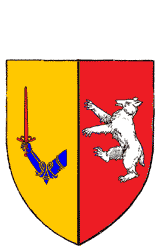 Olafsen, Erik Per pale or and gules, an arm azure bearing a sword of the second dexter, a bear rampant argent sinister. |
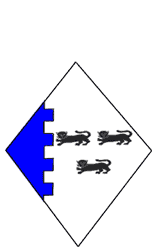 Sheba, Lady of Dinkeldyne Argent, three cats sable two and one, a tierce embattled azure. |
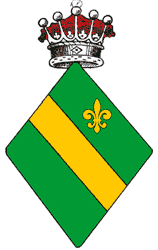 Savino, Isabella Vert, a bend or, in sinister chief a fleur-de-lis of the second. |
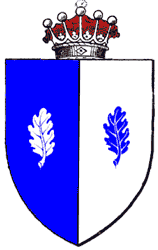 Tiranello, Syrio Per pale azure and argent, two leaves counterchanged. |
TBD
Velma, Cage Quarterly per saltire, in chief and base argent and in flanks sable, on a lozenge azure a rose gules with stem proper. |
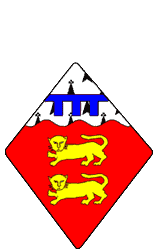 von Hronheim, Alexandra Gules, in pale two cats statant or, a chief wavy ermine, overall in chief a label of the first. |
 von Hronheim, Felix Gules, in pale two cats statant or, a chief wavy ermine. |
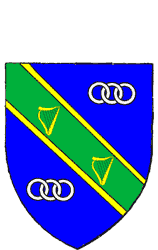 von Melleborg, Carlos Azure, on a bend vert fimbriated or between two sets of three annulets interlaced argent, two harps of the third. |
Heraldic Practice
Heraldry in Northern Hesket follows standard Anglo-French practice (no color upon metal, etc.) Men use the typical "shield" shape, women the diamond-shaped "lozenge".
However, as with all things Quest, there is gender equality. Women inherit equally with their brothers, and difference their coats accordingly. Married women do not combine their arms with their husband's, and men who marry heiresses do not use eschutcheons of pretense.
This means that sons and daughters are both armigerous, and this would create a confusing flurry of quartered arms if we followed Earthly practice. Thus, in the CG, children of two armigerous parents do not regularly quarter their parents' arms. Ordinarily, children inherit and difference only the more important parent's arms. Only if both parents are of equal rank do they quarter both parent's arms. (So if a peer marries a non-peer, only the peer's arms are passed on. The children of a prince and a countess would keep only the prince's arms. Prince Martin of Cadfaigh and Ragnorack, being the child of two monarchs, quarters his parents' arms as they are of equal stature.)
Remember to avoid Earthly religious imagery; the "cross" charge is ok, since this is basically just a plus sign, and occurs in art all over the Earth. However, please avoid outright crucifixes, Stars of David, etc.
Note that Kiljukan, Marakhin, and Yamamoto are non-Northern and thus do not follow such practice (though they do have their own crests, written in standard blazon above). Also, mahiri have no set heraldry, and dwarves have their own system entirely (see below).
Who Bears a Coat of Arms?
As with European practice, a coat of arms is granted by the monarch for service; the coat is then passed on to the heir(s). This means that, for the most part, only nobles, knights and gentry will have a coat of arms.
However, anyone may put a symbol upon their shield. Unlike a coat of arms, this symbol is not unique to the individual and is not officially inherited. It also need not follow the rules of blazon; it's just a symbol.
Dwarven Heraldry
Dwarves do not use the "color upon metal" scheme, or any of the other rigid elements of heraldry and blazon used by humans. Any color scheme is permitted, although visual aesthetics still play a part. Frequently, the clan colors (which, for the Inner clans, match the color painted on the forehead of dwarven players) play a major part in the color scheme of the standards. Furthermore, "dwarven" symbols such as axes, crossbows, obelisks, lizards (several varieties), dragons, arches, shields, maces, hammers, columns, chains, mountains and drums tend to be common as dwarven charges.
Dwarves also do not strictly use a "differencing" scheme. For every crest there is a similar version which is the "heir's crest". This crest is a modified version of the original crest, but the modification can be of any type, not just adding a "mark of difference". (For instance, the color of the field might be changed instead.) The designated same-sex heir uses this crest until the parent dies, and then assumes the parent's crest. Children who are not the heir use the same-sex parent's crest, modified any way they wish.
Dwarves use round shields rather than the "flat-top kite" shape used by humans. This circle is then divided into three horizontal stripes of roughly equal height. The bottom (the most important part to a dwarf, they being subterranean) stripe is the clan emblem. The middle stripe is the family emblem. The top stripe is the personal emblem.
Note that for heads of family, the personal and family emblems will be one and the same, and thus the top two stripes will be made into one stripe, twice as tall as normal. For the royal family, the clan and family emblems are the same, and it is the bottom two stripes which are made into one big stripe. For heads of clan (King and Queen), all three stripes are the same, and thus the crest bears only the emblem of the clan.
Who Bears a Coat of Arms?
The importance of heirarchy in dwarven society means that the dwarves are more giving with coats of arms than humans. Any PC who is of journeyman status or higher may assume that s/he owns a coat of arms, if desired.
However, any dwarf, down to the most common foot soldier, may still bear his or her "Dominion coat". This coat consists of their clan stripe, family stripe, and their "Dominion" stripe, depending on what dominion the person is in:
- Ruling Dominion: a stripe of the clan's color, with a white diamond (symbolizing a gem.) [note: most members will have a personal stripe, so this Dominion stripe is largely moot]
- Holy Dominion: a stripe of the clan's color, with a white triangle (symbolizing a mountain)
- Iron Dominion: a stripe of the clan's color, with a white circle (symbolizing a shield)
- Gold Dominion: a stripe of the clan's color, with a gold rectangle (symbolizing an ingot or an anvil)
Dwarven Clan Stripes
 Earthcrown a brown stripe with a gold crown. |
 Icemountain a blue stripe with a white mountaintop. |
 Ironstar a black stripe with a silver star. |
 Silverrock a silver stripe with a black hammer. |
 Whiteblood a white stripe with a gray pick. |
 Wyrmsbane a red stripe with a white dragon rampant. |

